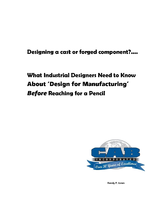NTSB Details fourteen recommendations to FAA.
Share:
Press Release Summary:
NTSB recommendations A-10-46 through A-10-59 address several FAA issues. Specifically, areas of concern cover tire pressure monitoring equipment, maintenance, and information availability as well as identification of deficiencies for Learjet system safety analyses and revision of available safety assessment guidance. Other topics include application of airworthiness regulations, minimum initial operating experience levels, and tire failure simulation requirements.
Original Press Release:
NTSB Safety Recommendations A-10-46 through A-10-59
The National Transportation Safety Board recommends that the Federal Aviation Administration:
Provide pilots and maintenance personnel with information that (1) transport-category aircraft tires can lose up to 5 percent pressure per day, (2) it may take only a few days for such tires to reach an underinflation level below what the aircraft maintenance manual specifies for tire replacement, and (3) the underinflation level that would require tire replacement is not visually detectable. (A-10-
46)
Require that all 14 Code of Federal Regulations Part 121, 135, and 91 subpart K operators perform tire pressure checks at a frequency that will ensure that the tires remain inflated to within aircraft maintenance manual-specified inflation pressures. (A-10-47)
Require that aircraft maintenance manuals specify, in a readily identifiable and standardized location, required maintenance intervals for tire pressure checks (as applicable to each aircraft). (A-10-48)
Allow pilots to perform tire pressure checks on aircraft, regardless of whether the aircraft is operating under 14 Code of Federal Regulations Part 91, Part 91 subpart K, or Part 135. (A-10-49)
Require tire pressure monitoring systems for all transport- category airplanes. (A-10-50)
Identify the deficiencies in Learjet's system safety analyses, both for the original Learjet 60 design and for the modifications after the 2001 accident, that failed to properly address the thrust reverser system design flaws related to this accident, and require Learjet to perform a system safety assessment in accordance with 14 Code of Federal Regulations 25.1309 for all other systems that also rely on air-ground signal integrity and ensure that hazards resulting from a loss of signal integrity are appropriately mitigated to fully comply with this regulation. (A-10-51)
Revise available safety assessment guidance (such as Advisory Circular 25.1309-1A) for manufacturers to adequately address the deficiencies identified in Safety Recommendation A-10-51, require that designated engineering representatives and their Federal Aviation Administration (FAA) mentors are trained on this methodology, and modify FAA design oversight procedures to ensure that manufacturers are performing system safety analyses for all new or modified designs that effectively identify and properly mitigate hazards for all phases of flight, including foreseeable events during those phases (such as a rejected takeoff). (A-10-52)
Revise Federal Aviation Administration Order 8110.48 to require that the most current airworthiness regulations related to equipment, systems, and installations (14 Code of Federal Regulations 25.1309) are applied to all derivative design aircraft certificated as changed aeronautical products. (A-10-53)
Review the designs of existing derivative design aircraft that were certificated as changed aeronautical products against the requirements of the current revision of 14 Code of Federal Regulations 25.1309 and require modification of the equipment, systems, and installations to fully comply with this regulation. (A-10-54)
Define and codify minimum simulator model fidelity requirements for tire failure scenarios. These requirements should include tire failure scenarios during takeoff that present the need for rapid evaluation and execution of procedures and provide realistic sound and motion cueing.
(A-10-55)
Once the simulator model fidelity requirements requested in Safety Recommendation A-10-55 are implemented, require that simulator training for pilots who conduct turbojet operations include opportunities to practice responding to events other than engine failures occurring both near V1 and after V1, including, but not limited to, tire failures. (A-10-56)
Require that pilots who fly in 14 Code of Federal Regulations (CFR) Part 135 operations in aircraft that require a type rating gain a minimum level of initial operating experience, similar to that specified in 14 CFR 121.434, taking into consideration the unique characteristics of Part 135 operations. (A-10-57)
Require that pilots who fly in 14 Code of Federal Regulations (CFR) Part 135 operations in an aircraft that requires a type rating gain a minimum level of flight time in that aircraft type, similar to that described in 14 CFR 121.434, taking into consideration the unique characteristics of Part 135 operations, to obtain consolidation of knowledge and skills. (A-10-58)
Require that tire testing criteria reflect the actual static and dynamic loads that may be imposed on tires both during normal operating conditions and after the loss of one tire and consider less-than-optimal allowable tire conditions, including, but not limited to, the full range of allowable operating pressures and acceptable tread wear. (A-10-59)
http://ntsb.gov/Recs/letters/2010/A-10-046-059.pdf




